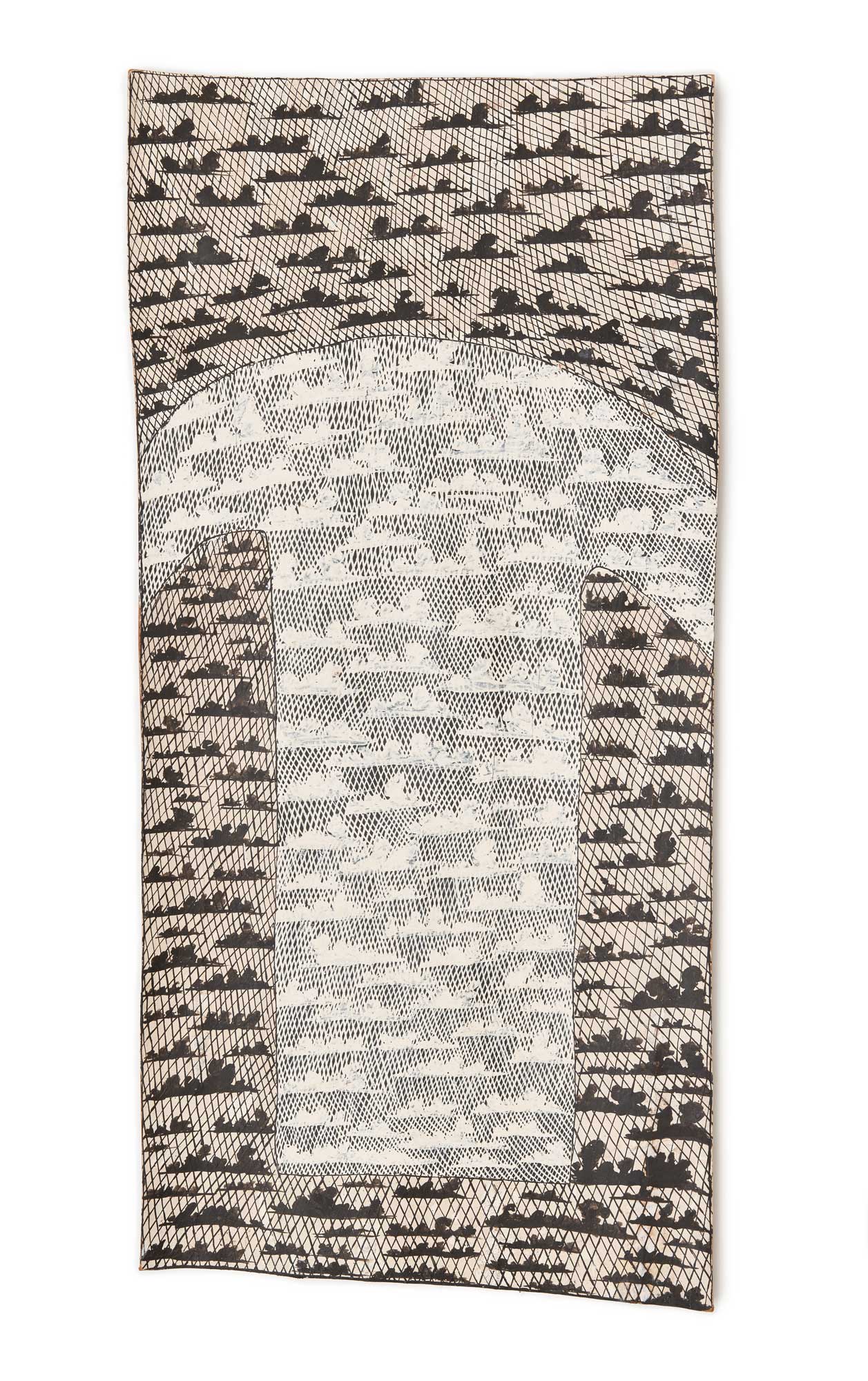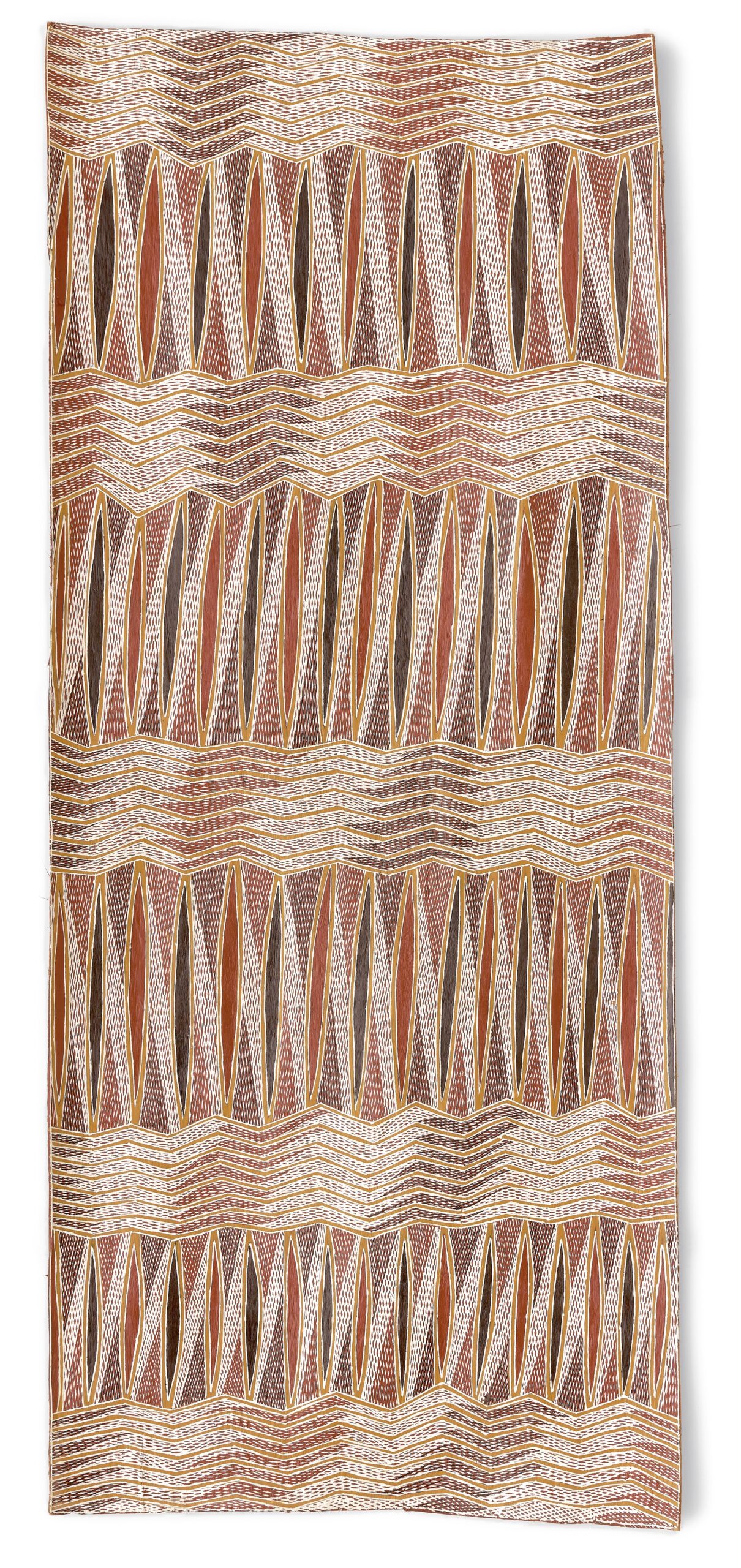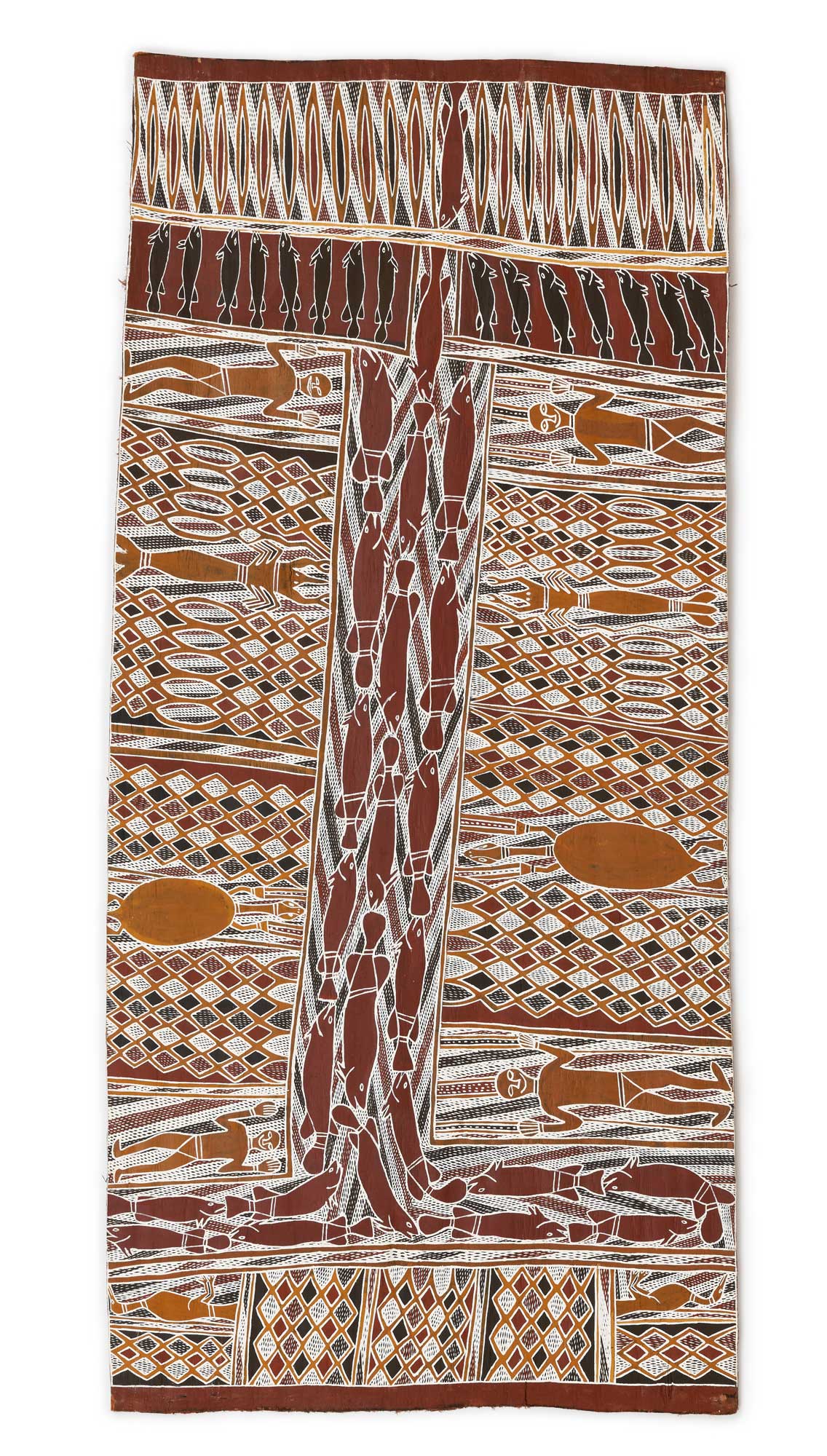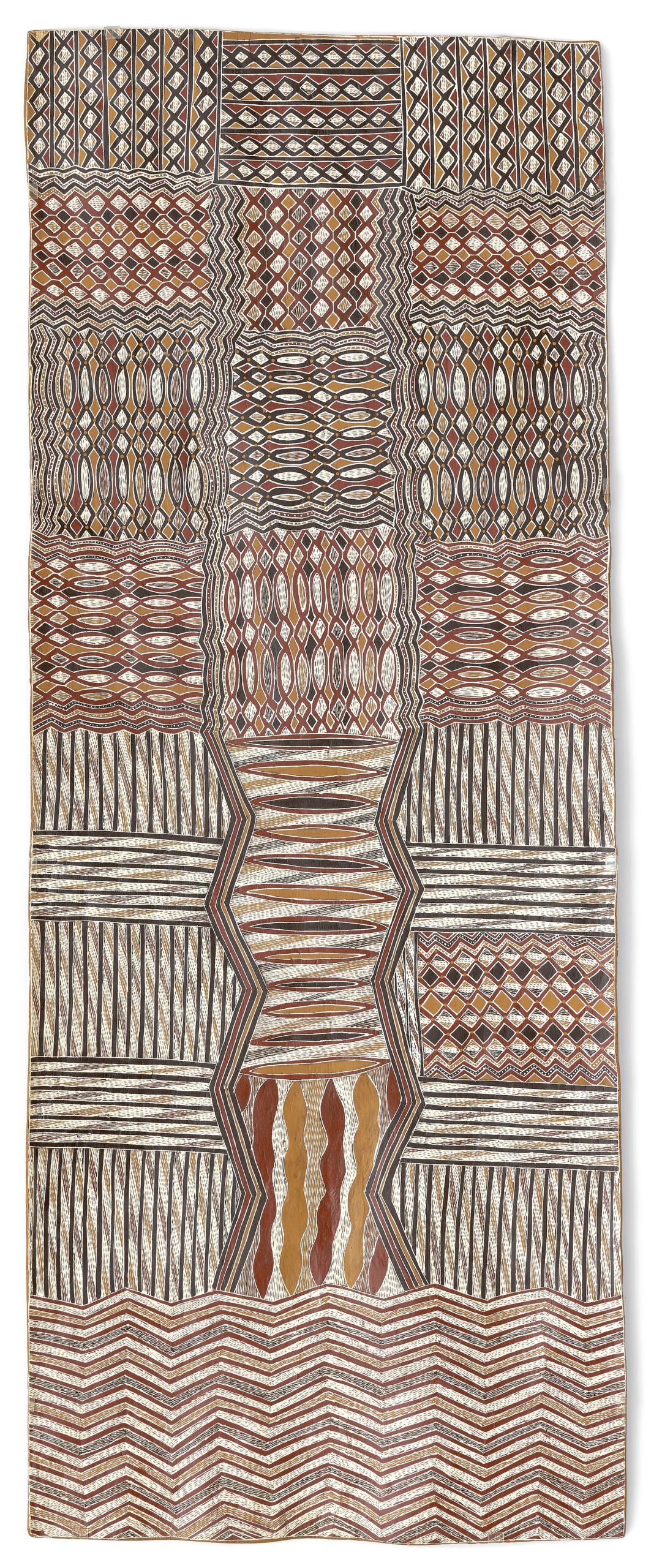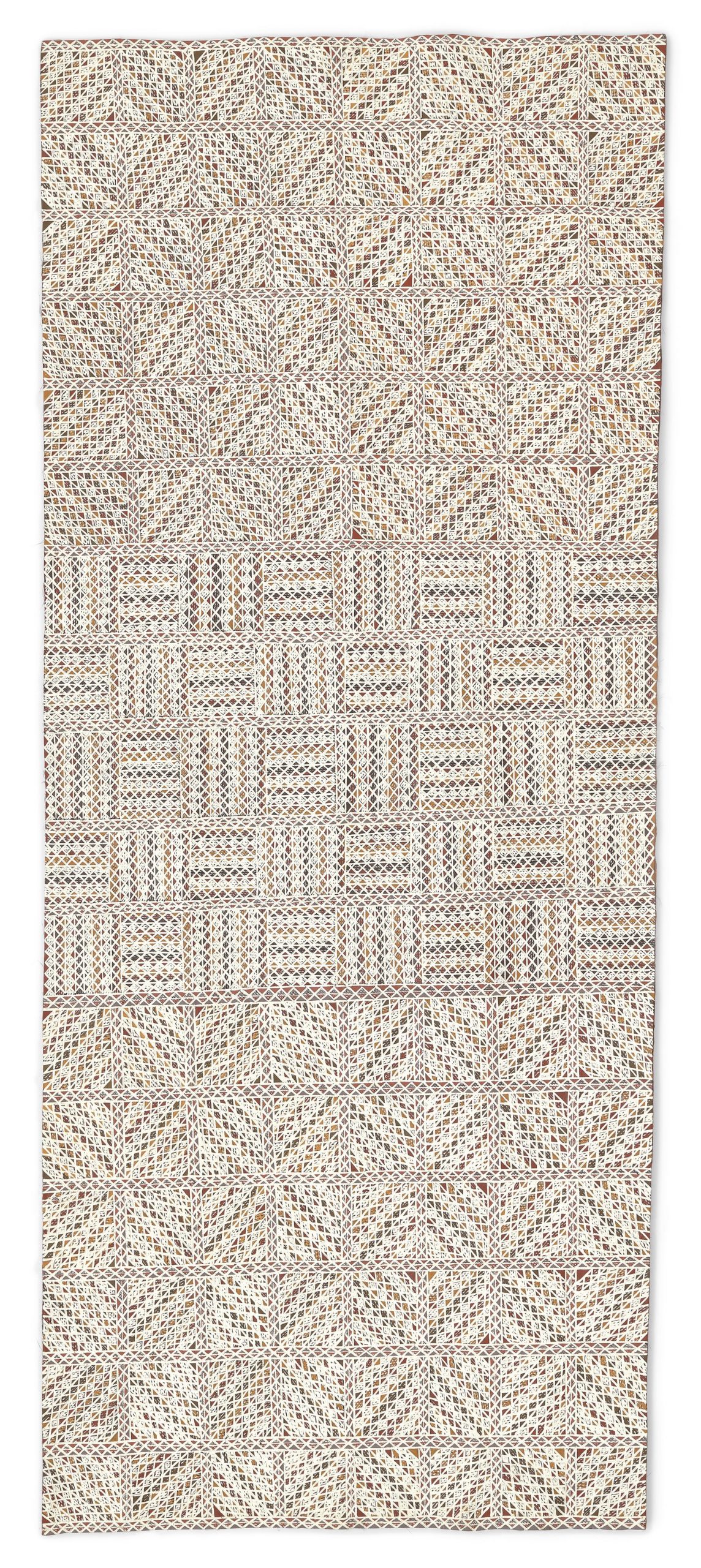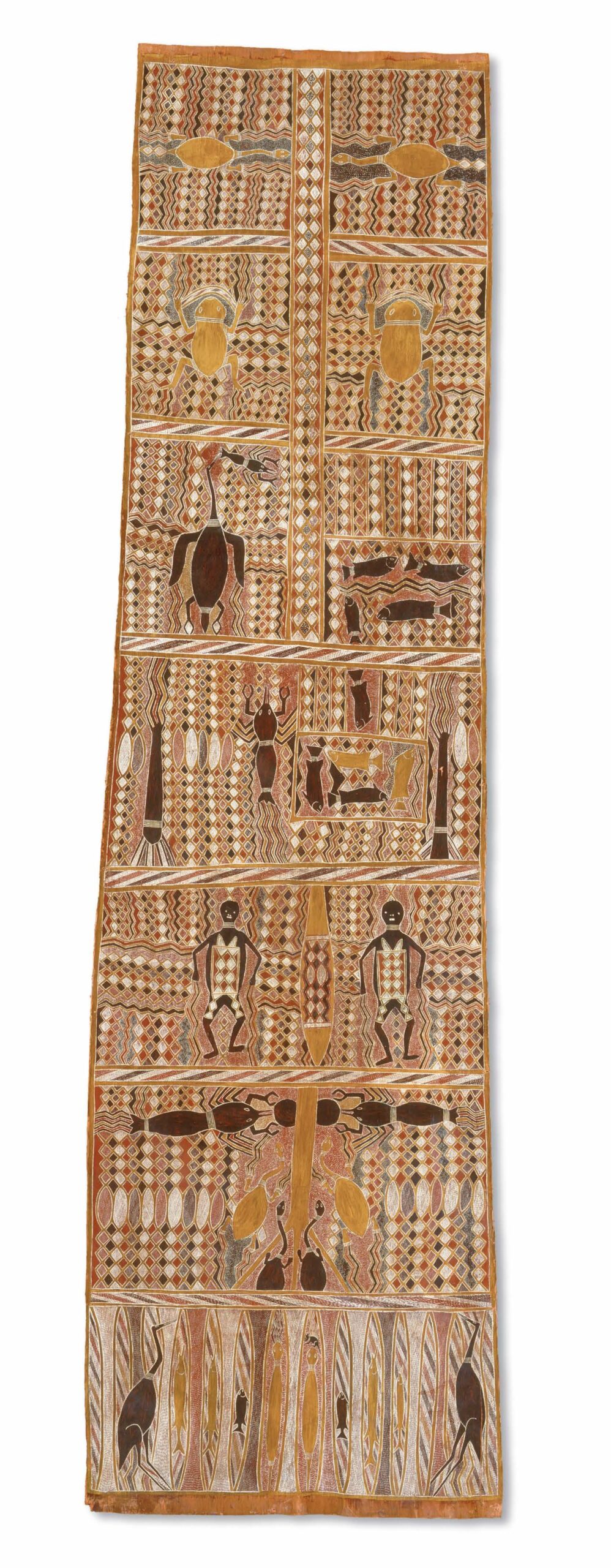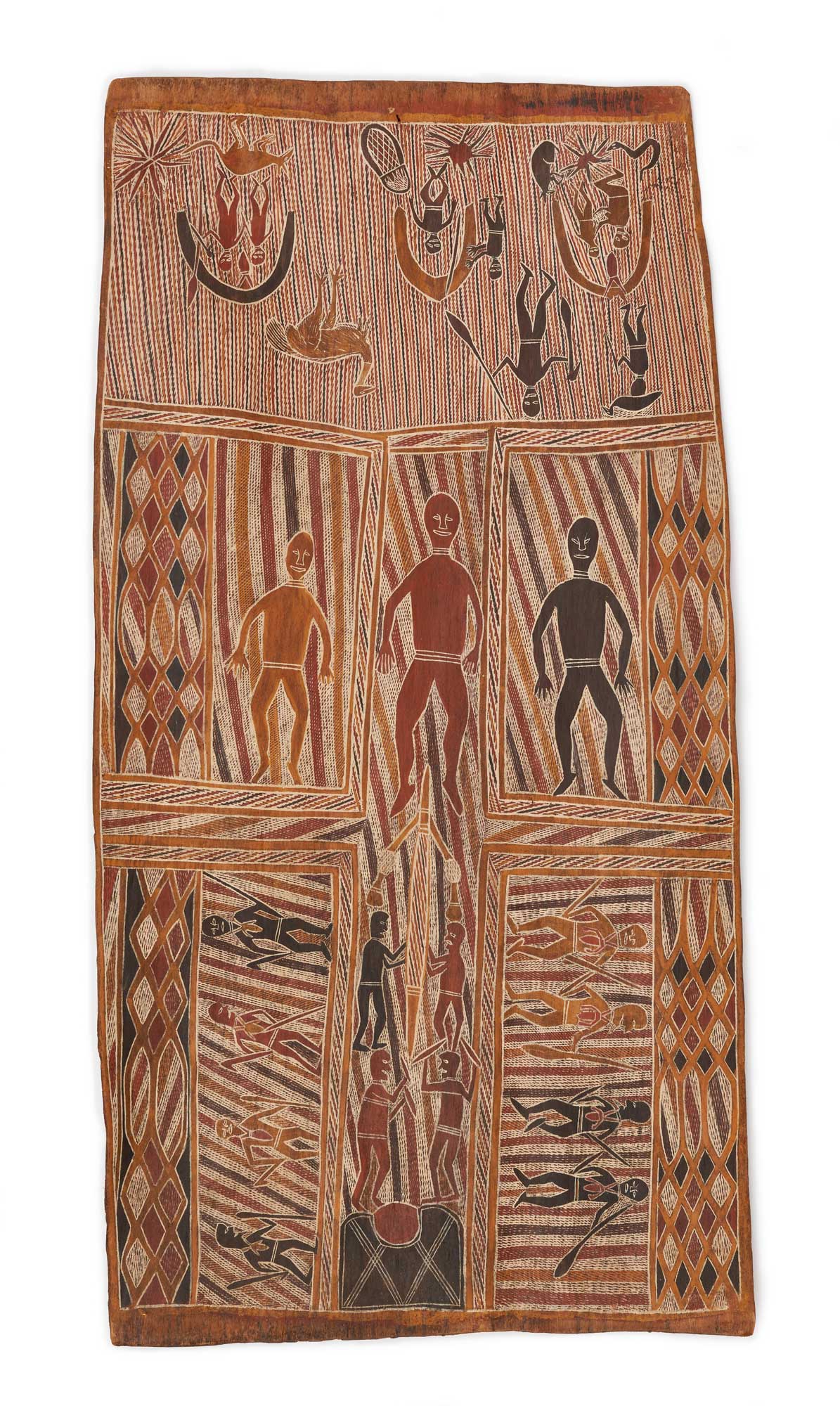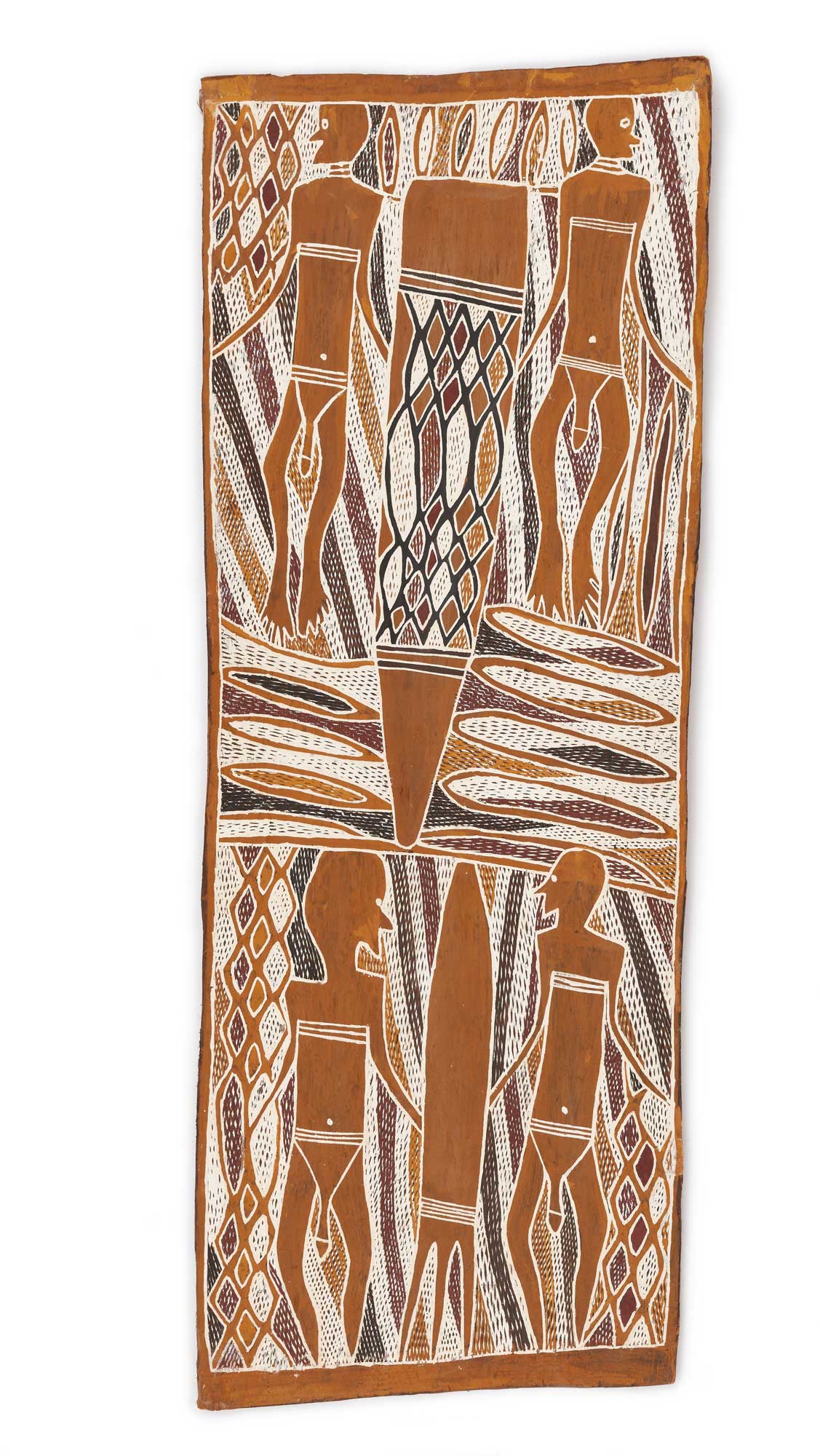
Dhaḻwaŋu
The Dhaḻwaŋu clan belongs to the Yirritja moiety. The most important Dhaḻwaŋu songlines relate to the Yirritja creation ancestor Barama, who emerged from the waters near Gäṉgaṉ, bringing Law to all the Yirritja clans.
Along with the Maḏarrpa and Maŋgalili clans, the Dhaḻwaŋu also perform ceremonies relating to the yiŋapuŋapu, the elliptical sand sculpture used in funeral ceremonies.
The Dhaḻwaŋu clan’s main homeland is at Gäṉgaṉ, a freshwater area consisting of rivers, waterholes, and stringybark eucalyptus forest. Their coastal estate is Garrapara, where there is a permanent yiŋapuŋapu.
Gurrumuru is another homeland for the Dhalwaŋu. Many of the Ŋarrkala group of Dhalwaŋu moved to Gurrumuru with the great Nyepayŋa Wunuŋmurra, as part of the homeland movement in the seventies.
As with Gäṉgaṉ, Gurrumuru is located on permanent sacred water. The Gurrumuru River is ancient and from its end on Arnhem Bay, up into the tidal plains, tributaries are lined with dense mangroves and primeval mud before giving way to pockets of rain forest then open woodland where the community live.
Members of the Dhaḻwaŋu clan use the last names Gumana and Wunuŋmurra.
Birrikitji Gumana was the most senior contributor to the Yirritja side of the Yirrkala Church Panels, and with his sons Gawirriṉ Gumana and Yaŋgarriny Wunuŋmurra, re-established Gäṉgaṉ as a homeland for the Dhaḻwaŋu people.
Dr. Gawarriṉ Gumana AO was an ordained Methodist minister, a member of the Order of Australia and a a significant leader of the Yolŋu people. He was a highly honored ceremonial elder and painter.
Yaŋgarriny Wunuŋmurra was the first Aboriginal Australian artist to have his copyright recognized in an Australian court, in the case Yanggarriny Wunungmurra v. Peter Stripes Fabrics, in one of his designs was reproduced on a carpet without permission. In 1997, Yaŋgarriny was awarded first prize at the National Aboriginal and Torres Strait Islander Art Awards.
His daughter Djirrirra is also a bark painter. His son Nawurapu was a painter and sculptor who paved the way for the Buwayak (invisibility) movement of bark paintings without figurative imagery.
The consulting curator from the Dhaḻwaŋu clan for this project was Yinimala Gumana.
Filter By
- Select a Filter
- Clans
- Songlines
Selection

